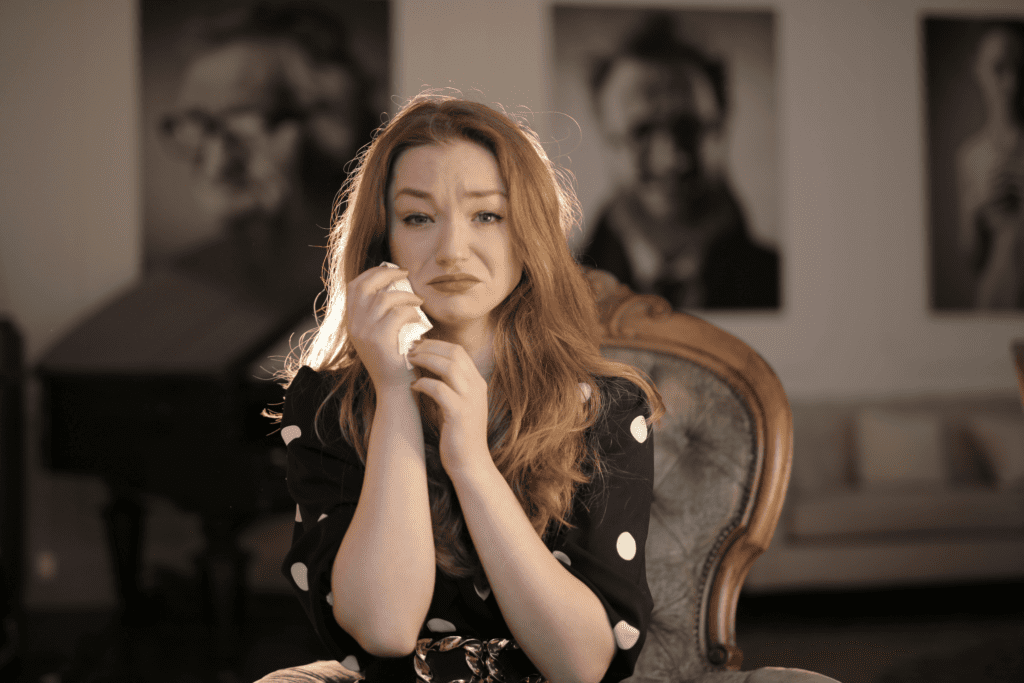Last updated on December 18th, 2024 at 03:14 am
- 1. Understanding PTSD
- 1.1 Common Symptoms of PTSD
- 2. Educating Yourself About PTSD
- 2.1 Debunking Common Myths About PTSD
- 2.2 Understanding the Impact of PTSD on Daily Life
- 3. Effective Communication Strategies
- 3.1 Active Listening
- 3.2 Using Supportive Language
- 4. Creating a Safe and Supportive Environment
- 4.1 Understanding Triggers
- 4.2 Respecting Boundaries
- 5. Encouraging Professional Help
- 5.1 Types of Professional Help
- 5.2 How to Encourage Seeking Help
- 6. Supporting Recovery and Healing
- 6.1 Encouraging Healthy Coping Mechanisms
- 6.2 Celebrating Progress
- 7. Taking Care of Yourself
- 7.1 Setting Boundaries
- 7.2 Self-Care Strategies
- Building a Safe Space for Trauma Survivors
- Recognizing Avoidance Behaviors and Responses
- Navigating Social Activities for PTSD Recovery
- Understanding PTSD-Related Physical Symptoms
- Encouraging Mental Health Treatment and Professional Support
- Exploring the Benefits of Family Therapy
- Promoting Routine and Stability
- Addressing Complex Post-Traumatic Stress Disorder (C-PTSD)
- Understanding the Role of Medication in PTSD Treatment
- Encouraging Emotional Recovery Through Creative Outlets
- Assisting in Navigating Employment and Legal Rights
- Supporting Sleep Hygiene and Physical Health
- Recognizing Secondary Trauma in Supporters
- Additional Resources for PTSD Support
- Addressing Internal Feelings and Emotional Numbness
- Encouraging Rhythmic Exercise for Stress Reduction
- Understanding Common Feelings and Emotional Reactions
- The Role of Positive Qualities in Recovery
- Recognizing the Impact of PTSD on Family Life
- Encouraging Participation in Fun Activities
- Supporting a Friend with PTSD During Anniversaries of Trauma
- Exploring Evidence-Based Practice in PTSD Treatment
- Understanding the Connection Between PTSD and Substance Abuse
- The Importance of a Safe Environment in PTSD Recovery
- Encouraging the Use of Online Therapy Services
- Understanding the Role of Deep Breathing in Managing PTSD Symptoms
- Conclusion
- Frequently Asked Questions
- How to Encourage a Friend With PTSD to Seek Professional Help
- How to Recognize PTSD Triggers in a Friend
- How to Provide Emotional Support for PTSD Sufferers
- How to Assist a Loved One in Managing PTSD-Related Anxiety
- How to Help a Friend Navigate PTSD Flashbacks
- How to Build Trust With a Friend Who Has PTSD
- How to Avoid Common Mistakes When Supporting a Friend With PTSD
- How to Encourage Healthy Habits in Friends With PTSD
- How to Recognize Avoidance Behaviors in Friends With PTSD
- How to Support a Friend With PTSD During Anniversaries of Trauma
- How to Support a Friend With PTSD in Seeking Employment
- How to Create a Safe Environment for PTSD Recovery
Post-traumatic stress disorder (PTSD) is a complex mental health condition that can have profound impacts on a person’s life and relationships. For those who have a friend or loved one struggling with PTSD, it can be challenging to know how to provide support in a helpful and sensitive way.
This article will explore effective strategies for supporting someone with PTSD, common misconceptions about the disorder, and important considerations for maintaining your own wellbeing while acting as a support system.
Find expert tips and advice on how to help a friend with post-traumatic stress disorder (PTSD). Learn ways to offer support and understanding when it matters most.
1. Understanding PTSD
Before delving into support strategies, it’s crucial to have a solid understanding of what PTSD is and how it manifests. Post-traumatic stress disorder develops in some people after experiencing or witnessing a shocking, scary, or dangerous event. While it’s natural to feel afraid during and after a traumatic situation, those with PTSD continue to experience stress and fear long after the danger has passed.
PTSD can result from a wide range of traumatic experiences, including:
- Combat exposure
- Childhood abuse or neglect
- Sexual violence
- Physical assault
- Serious accidents
- Natural disasters
- Terrorist attacks
- Sudden, unexpected loss of a loved one
It’s important to note that not everyone who experiences trauma will develop PTSD. Various factors influence susceptibility, including the nature and severity of the trauma, previous life experiences, and individual resilience.
1.1 Common Symptoms of PTSD
PTSD symptoms typically fall into four categories:
- Re-experiencing symptoms (flashbacks, nightmares, intrusive thoughts)
- Avoidance symptoms (staying away from places, events, or objects that are reminders of the traumatic experience)
- Arousal and reactivity symptoms (being easily startled, feeling tense, difficulty sleeping)
- Cognition and mood symptoms (trouble remembering key features of the traumatic event, negative thoughts about oneself or the world, distorted feelings of guilt or blame, loss of interest in enjoyable activities)
These symptoms can vary in intensity and may fluctuate over time. Understanding these symptoms is crucial for providing effective support to someone with PTSD.
2. Educating Yourself About PTSD
One of the most important steps in supporting someone with PTSD is to educate yourself about the condition. This involves more than just understanding the symptoms; it requires delving into the nuances of how PTSD affects daily life, relationships, and overall well-being.
2.1 Debunking Common Myths About PTSD
There are many misconceptions about PTSD that can hinder effective support. Some common myths include:
- PTSD only affects veterans
- People with PTSD are dangerous or unstable
- PTSD is a sign of weakness
- People should just “get over it” or “move on”
- PTSD always develops immediately after a traumatic event
Addressing these myths is crucial for providing empathetic and effective support. PTSD can affect anyone who has experienced trauma, regardless of their background or perceived strength. It’s a complex disorder that requires understanding and professional treatment, not judgment or oversimplification.


2.2 Understanding the Impact of PTSD on Daily Life
PTSD can affect every aspect of a person’s life, including:
- Work performance and career prospects
- Personal relationships and social interactions
- Physical health and overall well-being
- Self-esteem and self-image
- Ability to engage in previously enjoyable activities
By understanding these impacts, you can better empathize with your friend’s struggles and provide more targeted support.
3. Effective Communication Strategies
Communication is key when supporting someone with PTSD. However, it’s not just about what you say, but how you say it and how you listen.
3.1 Active Listening
Active listening involves fully concentrating on what is being said rather than just passively hearing the message of the speaker. When practicing active listening:
- Give your full attention to the speaker
- Show that you’re listening through non-verbal cues (nodding, eye contact)
- Provide feedback (paraphrasing, asking questions for clarification)
- Defer judgment and avoid interrupting
- Respond appropriately with empathy and understanding
3.2 Using Supportive Language
The words you choose can have a significant impact on someone with PTSD. Some examples of supportive phrases include:
- “I’m here for you whenever you need me.”
- “It’s not your fault.”
- “You’re not alone in this.”
- “I can’t fully understand what you’re going through, but I’m here to support you.”
- “Your feelings are valid.”
Avoid phrases that minimize their experience or suggest they should “get over it.”
4. Creating a Safe and Supportive Environment
People with PTSD often struggle with feeling safe. You can help by creating an environment that feels secure and supportive.
4.1 Understanding Triggers
Triggers are reminders of the traumatic event that can cause intense emotional or physical reactions. These can be highly individual and may include:
- Specific sounds, smells, or sights
- Certain locations or situations
- Anniversary dates of the traumatic event
- News stories or media content related to similar traumas
Work with your friend to identify their triggers and find ways to minimize exposure or develop coping strategies.
4.2 Respecting Boundaries
Respect your friend’s need for space and privacy. Some ways to do this include:
- Asking permission before discussing sensitive topics
- Allowing them to set the pace for conversations about their trauma
- Respecting their decision if they choose not to participate in certain activities
- Understanding that their needs may change over time


5. Encouraging Professional Help
While your support is invaluable, professional treatment is often necessary for managing PTSD effectively. However, encouraging someone to seek help can be challenging.
5.1 Types of Professional Help
There are various forms of professional help available for PTSD, including:
- Psychotherapy (talk therapy)
- Cognitive Behavioral Therapy (CBT)
- Eye Movement Desensitization and Reprocessing (EMDR)
- Medication (antidepressants, anti-anxiety medications)
- Support groups
5.2 How to Encourage Seeking Help
When encouraging your friend to seek professional help:
- Express your concerns gently and without judgment
- Offer to help research treatment options
- Provide practical support, such as offering to accompany them to appointments
- Be patient and understanding if they’re not ready to seek help immediately
- Share success stories of others who have benefited from treatment
6. Supporting Recovery and Healing
Recovery from PTSD is a journey, and your ongoing support can play a crucial role in your friend’s healing process.
6.1 Encouraging Healthy Coping Mechanisms
Healthy coping mechanisms can significantly aid in managing PTSD symptoms. These may include:
- Regular exercise
- Mindfulness and meditation practices
- Creative outlets like art or music
- Journaling
- Spending time in nature
Encourage and support your friend in developing these positive habits.
6.2 Celebrating Progress
Recovery from PTSD is often a gradual process with both progress and setbacks. It’s important to acknowledge and celebrate small victories along the way. This might include:
- Successfully facing a feared situation
- Implementing a new coping strategy
- Reaching a treatment milestone
- Improvements in daily functioning or mood


7. Taking Care of Yourself
Supporting someone with PTSD can be emotionally taxing. It’s crucial to prioritize your own well-being to avoid burnout and maintain the ability to provide effective support.
7.1 Setting Boundaries
While it’s important to be there for your friend, it’s equally important to set healthy boundaries. This might include:
- Defining limits on your availability
- Communicating clearly about what support you can and cannot provide
- Recognizing when you need to step back and take care of yourself
7.2 Self-Care Strategies
Implement self-care strategies to maintain your own mental and emotional health:
- Engage in regular physical activity
- Practice stress-reduction techniques like meditation or yoga
- Maintain your own support network
- Seek professional help if you’re feeling overwhelmed
- Engage in hobbies and activities that bring you joy
Building a Safe Space for Trauma Survivors
Creating a safe space is essential for someone dealing with PTSD. A safe space provides a sense of security where trauma survivors can relax without fear of sudden triggers.
This environment should be predictable, free from potential stressors, and adapted to their specific needs. Establishing a person space that promotes a sense of calm can significantly assist in their healing journey.
Recognizing Avoidance Behaviors and Responses
Avoidance behaviors are a common feeling among people with PTSD. These behaviors can include staying away from certain places, people, or situations that serve as reminders of the traumatic event.
It is vital to understand these avoidance behaviors as a response to trauma rather than a sign of weakness. Assisting a loved one with trauma recovery often means helping them feel understood without pressuring them to confront their fears before they’re ready.
Navigating Social Activities for PTSD Recovery
Social activities can be challenging for PTSD sufferers, especially during difficult feelings or moments of extreme fear. Encouraging participation in PTSD support groups or outdoor activities like a fitness class or even rock climbing can foster a sense of community and strength.
Such activities are also beneficial for positive emotions and help reduce isolation. However, it’s crucial to respect their boundaries and encourage small, achievable steps in socializing.
Understanding PTSD-Related Physical Symptoms
PTSD is often associated with physical symptoms that may not be as evident as the emotional ones. Symptoms like constant alert and arousal symptoms can take a heavy toll on the body.
These effects of trauma can lead to sleep disturbances, headaches, and even increased blood pressure. Supporting a friend through PTSD flashbacks or other extreme reactions involves recognizing these physical manifestations and suggesting techniques like deep breathing or rhythmic exercise to help manage these responses.


Encouraging Mental Health Treatment and Professional Support
A mental health professional can provide the necessary treatment to facilitate recovery from PTSD. There are multiple treatment options, including cognitive therapy and exposure therapy, which can address PTSD-related challenges.
It may also involve medications like a selective serotonin reuptake inhibitor (SSRI) for those experiencing severe symptoms. Encouraging therapy for PTSD can help your friend make significant strides in their recovery process. Resources like the National Institute of Mental Health and National Center for PTSD offer additional evidence-based resources.
Exploring the Benefits of Family Therapy
Family therapy is beneficial in helping both PTSD sufferers and their families understand each other. Mental health challenges such as PTSD can impact family life, creating negative emotions and misunderstandings.
Family therapy can foster deeper understanding and improve quality of life for everyone involved. It allows family members to learn effective communication strategies and share their own mix of feelings regarding their loved one’s distressing experiences.
Promoting Routine and Stability
For trauma survivors, establishing a predictable schedule can help create a sense of stability. Maintaining regular activities like a daily walk, regular lunch, or even a consistent bedtime can reduce the effects of PTSD-related anxiety.
Encouraging your friend to engage in these activities can also improve their overall quality of life and provide comfort during difficult times.
Addressing Complex Post-Traumatic Stress Disorder (C-PTSD)
Complex post-traumatic stress disorder, often caused by ongoing trauma, requires more in-depth support strategies. Unlike traditional PTSD, C-PTSD is typically associated with repeated distressing events, such as adverse childhood experiences.
This form of PTSD often involves more severe arousal symptoms and a broader range of reactions, such as emotional numbness or severe negative beliefs about oneself. It is crucial to be patient and provide a safe environment for expressing difficult feelings and ongoing emotional recovery.
Understanding the Role of Medication in PTSD Treatment
For many PTSD sufferers, medication plays a significant role in the recovery process. Healthcare professionals may prescribe medications like SSRIs to help manage negative emotions and emotional reactions.
These medications can help mitigate intense fear, emotional distress, and even panic disorder symptoms. It is essential to support your friend in adhering to their prescribed treatment while recognizing that medication is often just one aspect of a holistic approach to mental health treatment.


Encouraging Emotional Recovery Through Creative Outlets
Engaging in creative outlets can be an effective way for trauma survivors to work through their emotional experience. Encouraging creative outlets for PTSD expression, such as art, writing, or music, can help them channel negative feelings into something constructive.
Creative activities can provide an important outlet for processing emotions, ultimately contributing to the individual’s healing journey.
Assisting in Navigating Employment and Legal Rights
Supporting a friend with PTSD in seeking employment involves understanding the unique PTSD-related challenges they may face, such as dealing with extreme fear or managing negative emotions during interviews. Encouraging them to seek assistance from relevant organisations can help ensure they understand their legal rights as individuals with PTSD.
This might include accommodations that can make the workplace a more supportive and accessible environment.
Supporting Sleep Hygiene and Physical Health
Recognizing the impact of PTSD on physical health is crucial. Sleep disturbances are a common issue for those dealing with PTSD, often leading to increased physical and mental health issues.
Encouraging routines like healthy diet practices, creating a calming bedtime routine, and possibly seeking guidance from a licensed therapist can make a significant difference. Good sleep hygiene promotes physical recovery and contributes positively to emotional stability.


Recognizing Secondary Trauma in Supporters
Supporting someone with PTSD can sometimes lead to experiencing secondary trauma. Recognizing secondary trauma as a supporter is key to maintaining your own well-being while continuing to assist a friend.
Utilizing evidence-based resources, like those provided by relevant organisations, and seeking help from a licensed mental health professional can ensure that you maintain your own mental health and provide effective, sustainable support to your loved one.
Additional Resources for PTSD Support
It’s also valuable to explore additional resources that may aid both you and your friend. Free, online therapy service options are available for those unable to access in-person support, offering an effective alternative.
Additionally, utilizing resources like Military Veterans Programs for combat veterans or National Center for PTSD can provide targeted guidance and support for those in need.
Addressing Internal Feelings and Emotional Numbness
PTSD often results in a mix of feelings, including internal feelings of detachment or numbness. Trauma survivors may experience difficulty connecting with others, leading to feelings of isolation.
Assisting them through these difficult times requires patience and empathy. A licensed therapist can help them work through these internal feelings as part of the broader healing journey.
Encouraging Rhythmic Exercise for Stress Reduction
Rhythmic exercise, such as walking, swimming, or cycling, can be effective in managing arousal symptoms and reducing stress. This type of exercise helps regulate breathing and provides a physical outlet for emotional distress.
Encouraging your friend to engage in rhythmic exercise can foster positive emotions and improve their quality of life.
Understanding Common Feelings and Emotional Reactions
Feelings of fear, anger, or sadness are common feelings among people with PTSD. It is important to recognize these emotional reactions as normal reactions to trauma.
Providing emotional support for PTSD sufferers means validating these responses without judgment and helping them navigate through these challenging emotions.
The Role of Positive Qualities in Recovery
Highlighting a friend’s positive qualities can help bolster their sense of self-worth. Trauma survivors often struggle with negative beliefs about themselves.
Reminding them of their strengths can foster resilience and contribute to their recovery process. This positive reinforcement is crucial for maintaining motivation during the recovery journey.


Recognizing the Impact of PTSD on Family Life
PTSD can deeply affect family life, leading to strained relationships and misunderstandings. Family members may face a range of reactions, from frustration to empathy, as they navigate the complexities of supporting a loved one.
Family therapy can be an effective way to address these challenges, creating a safe environment for open communication and healing.
Encouraging Participation in Fun Activities
Incorporating fun activities into daily life can help reduce negative emotions and promote positive emotions. Activities like art classes, playing music, or spending time outdoors can provide a sense of joy and help mitigate the effects of trauma.
Supporting a friend in finding and engaging in these fun activities can be a meaningful part of their recovery journey.
Supporting a Friend with PTSD During Anniversaries of Trauma
Anniversaries of traumatic events can be particularly challenging for PTSD sufferers. These dates can trigger intense fear or emotional distress, leading to increased symptoms.
Providing additional support during these times, such as spending quality time together or creating a distraction with a favorite activity, can help lessen the emotional impact.


Exploring Evidence-Based Practice in PTSD Treatment
Evidence-based practice is crucial in the treatment of PTSD. Treatments such as Cognitive Behavioral Therapy (CBT) and exposure therapy are considered best practices in psychology for treating PTSD.
Encouraging your friend to pursue these evidence-based treatments with an experienced therapist can lead to more effective outcomes.
Understanding the Connection Between PTSD and Substance Abuse
PTSD is sometimes linked with substance abuse as individuals attempt to manage their difficult feelings through self-medication. Recognizing the signs of substance abuse and encouraging healthier coping mechanisms is crucial.
Engaging in social activities or pursuing hobbies can provide alternatives to substance use, promoting a healthier recovery process.
The Importance of a Safe Environment in PTSD Recovery
A safe environment is vital for the emotional recovery of individuals with PTSD. This includes both a physical safe space and an emotionally supportive atmosphere.
Creating a consistent, non-judgmental environment can help reduce feelings of distress and encourage open communication, aiding in the healing journey.
Encouraging the Use of Online Therapy Services
For those unable to access in-person therapy, online therapy services offer a viable alternative. These platforms provide access to licensed therapists and evidence-based resources that can help trauma survivors manage their symptoms.
Encouraging your friend to explore online therapy can be a practical step towards beginning or continuing their treatment.
Understanding the Role of Deep Breathing in Managing PTSD Symptoms
Deep breathing exercises can help manage the arousal symptoms associated with PTSD. Techniques such as deep breathing can promote a sense of calm and help alleviate physical symptoms like rapid heartbeat or muscle tension.
Encouraging your friend to practice deep breathing regularly can be an effective tool in managing their PTSD symptoms.
Conclusion
Supporting a friend with PTSD requires patience, understanding, and a commitment to ongoing learning and growth. By educating yourself about the disorder, practicing effective communication, creating a supportive environment, encouraging professional help, and taking care of your own well-being, you can play a vital role in your friend’s healing journey.
Remember that recovery is possible, and your support can make a significant difference in your friend’s life. While the path may be challenging, the bonds of friendship and the power of human connection can be transformative in the face of trauma.
From Embrace Inner Chaos to your inbox
Transform your Chaos into authentic personal growth – sign up for our free weekly newsletter! Stay informed on the latest research advancements covering:
Narcissistic Personality Disorder (NPD)
Frequently Asked Questions
How to Encourage a Friend With PTSD to Seek Professional Help
Encouraging a friend to seek professional help for PTSD can be challenging, especially if they are resistant to the idea. Start by having an open, non-judgmental conversation with your friend.
Emphasize that seeking help from a licensed therapist can provide tools for managing symptoms and improving their quality of life. It may be helpful to mention how National Institute of Mental Health highlights the importance of professional intervention in facilitating emotional recovery for those with PTSD.
Reinforce that seeing a mental health professional does not mean there is something wrong with them, but rather it is a step toward healing and empowerment. Explain that PTSD treatment often involves evidence-based practices such as cognitive therapy or exposure therapy, which have been proven effective in reducing symptoms and improving mental health.


For some individuals, selective serotonin reuptake inhibitors (SSRIs) are also beneficial in managing arousal symptoms, such as extreme fear or constant alert. It’s helpful to share information in a gentle manner and ensure they know you will be there for them throughout the process.
Sometimes, showing examples of others’ successful recovery journeys can motivate your friend to take that first step. Lastly, provide additional resources that could help, like reputable online therapy services or relevant organizations that focus on PTSD.
Offer to help them find a mental health professional or go with them to the first appointment, if it would make them more comfortable. Creating a supportive and safe environment is key to encouraging your friend to seek the help they need.
How to Recognize PTSD Triggers in a Friend
Recognizing PTSD triggers in a friend is crucial for providing effective support. Triggers can be anything that reminds them of a distressing event, leading to an intense emotional reaction.
Observe their behavior and take note of moments when they seem to become anxious, withdrawn, or exhibit negative emotions unexpectedly. Many triggers are related to sensory inputs such as smells, sounds, or even places that remind them of the original trauma.
The National Center for PTSD offers detailed resources on identifying and managing triggers in individuals with PTSD. When you notice your friend reacting negatively in certain situations, ask them if they are comfortable sharing what might have caused the reaction.
Respecting their boundaries while gently inquiring can help you gain insight into their internal feelings and the effects of trauma. By understanding their specific triggers, you can help create a safe space that minimizes these stressful experiences.
Establishing predictable schedules and activities can also help reduce the likelihood of encountering these triggers, giving them a sense of stability and safety. Understanding triggers not only involves identifying potential causes but also learning how to help your friend cope in those moments.
Distraction, breathing exercises, or rhythmic activities like walking can all provide a sense of calm during these times. Offering your friend support in these ways makes them feel less alone, particularly during challenging moments.
How to Provide Emotional Support for PTSD Sufferers
Providing emotional support for a friend with PTSD involves more than just listening; it requires patience, empathy, and consistency. Being there for someone during such a vulnerable time means creating a non-judgmental, open environment where they feel comfortable expressing themselves.
Healthline emphasizes the importance of active listening, which means not only hearing what your friend is saying but also validating their experiences without giving advice or attempting to fix things immediately. Acknowledging their difficult feelings and letting them know that their emotions are valid can help them feel less isolated.
It’s common for trauma survivors to feel a mix of emotions, from sadness to anger. Let your friend know it’s okay to feel these emotions without judgment.
Reinforce their strengths and positive qualities whenever possible, helping them recognize that they are more than their trauma. Maintaining a sense of stability can also be incredibly beneficial.
Simple actions, such as scheduling regular lunch or spending quality time together doing social activities, provide a sense of normalcy. Predictable schedules can help someone with PTSD regain some control over their daily life, reinforcing the idea that they are not alone in their healing journey.
How to Assist a Loved One in Managing PTSD-Related Anxiety
Anxiety is a common feeling among those with PTSD, often stemming from a sense of threat symptoms and constant alert. You can help your friend manage PTSD-related anxiety by guiding them through grounding techniques, such as focusing on physical sensations or describing the current environment in detail to help them remain present.
Psychology Today highlights the use of mindfulness practices, such as deep breathing exercises, which can reduce anxiety by promoting relaxation and helping to shift their focus away from distressing thoughts. Encourage your friend to take part in activities that have been shown to reduce anxiety, such as rhythmic exercise, which can include dancing, swimming, or even rock climbing.
Engaging in physical activities can help release negative energy and improve mood through the production of endorphins, further reducing anxiety symptoms. Emphasize that maintaining a healthy diet, engaging in regular exercise, and getting adequate sleep are all important components of managing anxiety.
Additionally, creating a predictable and safe environment can help minimize moments of extreme fear or anxiety. Spend time with your friend in places where they feel secure, and avoid unexpected changes that may induce stress.
Working together to establish a calm and stable setting is an effective way to help them regain a sense of control and security.


How to Help a Friend Navigate PTSD Flashbacks
Flashbacks can be one of the most distressing symptoms of PTSD, where an individual feels as though they are reliving a dangerous event. Helping a friend during a flashback requires you to remain calm and compassionate.
Speak to them in a gentle tone, reminding them of their present surroundings and that they are safe. Verywell Mind suggests helping them reconnect with the present by encouraging them to touch or hold an object, like a blanket or cushion, to ground themselves.
Avoid physical contact unless your friend has previously indicated that it helps, as unexpected touch can sometimes worsen the flashback. Use simple language, such as reminding them of the day, time, and where they are, to help reorient them.
It’s also helpful to lead them through a breathing exercise—having them take slow, deep breaths can help reduce the severity of their response to trauma. After the flashback subsides, encourage your friend to talk about how they felt, but only if they are comfortable doing so.
Allowing them to process the experience in a safe environment is important. Remind them that these flashbacks are a symptom of PTSD and that they are not alone in their experience.
Providing a predictable environment and regular routines can further help reduce the occurrence of such intense flashbacks.
How to Build Trust With a Friend Who Has PTSD
Building trust with someone who has PTSD takes time, especially since they may have a heightened sense of caution due to their trauma. Establishing a supportive relationship requires consistency, empathy, and patience.
Trust is built when you show up consistently and make good on your promises—for example, being there when you say you will. The American Psychological Association emphasizes the importance of being a reliable source of support without pushing your friend to share more than they are comfortable with.
Refrain from asking intrusive questions or attempting to force them into conversations about their distressing experiences. Instead, let them share their story at their own pace.
Respecting their personal space and boundaries demonstrates that you care about their comfort and safety, which will foster a deeper connection over time. Make sure they know that they are in control of how much they want to share and that you’re there regardless.
Encouraging fun activities and social interactions that do not revolve around the trauma can also help. Spending time together in a relaxed setting can help reinforce positive emotions and remind them that they are capable of joy.
Trust grows out of positive experiences, and showing patience and understanding throughout the process makes a significant difference.
How to Avoid Common Mistakes When Supporting a Friend With PTSD
When supporting a friend with PTSD, it is crucial to avoid minimizing their experiences or offering unsolicited advice. PTSD is a complex post-traumatic stress disorder that cannot be simply overcome with willpower or positive thinking.
According to Mayo Clinic, one of the most common mistakes supporters make is telling trauma survivors to “move on” from their experiences or suggesting that they simply need to focus on positive emotions. This can invalidate their experience and lead to a sense of isolation.
Another mistake to avoid is pushing them into situations that could potentially be triggering. For example, if a particular type of social setting causes them distress, respect their need to avoid it instead of encouraging them to face it for the sake of “getting over it.”
Forcing exposure to triggers without proper guidance from an experienced therapist can lead to severe emotional distress and hinder the recovery process. Finally, remember not to take their behaviors personally.
PTSD can lead to avoidance behaviors or emotional numbness, which may make your friend seem distant or unresponsive. This is not a reflection of your friendship but rather a symptom of their ongoing trauma.
By not taking these reactions personally and offering steady support, you can help create a safe space for their recovery.
How to Encourage Healthy Habits in Friends With PTSD
Encouraging healthy habits in friends with PTSD can significantly improve their quality of life and help manage symptoms. Suggest activities that promote overall well-being, such as exercise, which is known for its positive impact on mental health.
According to Harvard Health, exercise helps regulate mood and can reduce symptoms of anxiety and depression. Engaging in activities like a fitness class, yoga, or even taking a walk can be a positive step toward healing.
Proper nutrition also plays an important role in mental health. Encouraging your friend to maintain a healthy diet, including balanced meals at regular intervals, can help improve their physical health, which in turn affects emotional resilience.
Meal preparation together can be a way to bond and reinforce healthy habits. Another important aspect is promoting a regular sleep routine, as lack of sleep can worsen PTSD symptoms like irritability and anxiety.
Additionally, mindfulness practices like meditation or deep breathing exercises can help reduce arousal symptoms and provide a sense of calm. Suggest these practices gently, and remind them that these techniques can be particularly useful during moments of intense fear or anxiety.
By encouraging small, manageable steps toward healthy habits, you help foster an environment where your friend feels supported in their recovery journey.
How to Recognize Avoidance Behaviors in Friends With PTSD
Avoidance behaviors are a common coping mechanism for people with PTSD and can manifest in many different ways. Recognizing these behaviors is crucial for understanding what your friend is going through and how best to help.
Avoidance can look like a refusal to discuss the distressing event, actively steering away from anything that reminds them of it, or withdrawing from family life and social activities altogether. The Cleveland Clinic explains that avoidance is a survival strategy that helps trauma survivors temporarily manage their intense emotions.
If you notice your friend withdrawing from conversations, people, or places they used to enjoy, it could be an indication of avoidance. They may avoid watching certain movies, visiting certain locations, or even speaking about topics that bring up difficult memories.
These behaviors are protective in nature, and while they may be necessary at times, they can also interfere with their quality of life and relationships. Instead of forcing them to confront these situations, be supportive by helping them find safe ways to re-engage.
Gentle exposure, under the guidance of a healthcare professional, may eventually be helpful, but it must be done in a way that respects your friend’s comfort level. Encouraging positive activities that don’t remind them of the trauma can help them slowly begin to feel safer in their current environment.
How to Support a Friend With PTSD During Anniversaries of Trauma
Anniversaries of trauma can be particularly difficult for someone with PTSD, as these dates can trigger intense feelings of fear, sadness, or other distressing emotions. Supporting a friend during this time involves acknowledging the significance of the date while providing comfort.
The National Alliance on Mental Illness recommends checking in with your friend in advance of the anniversary. Simply letting them know you are there for them can make a significant difference.
Create a plan together for how they would like to spend the day. Some people may find comfort in spending time alone, while others may prefer to be surrounded by friends.
Let them dictate how they wish to cope, and offer to participate in activities that bring them comfort. Whether that means accompanying them to a therapy appointment, engaging in a calming activity, or just being present, your willingness to be there can provide a much-needed sense of calm.
It’s also helpful to remind them of the progress they have made in their recovery process, however small. Reflecting on positive changes and the resilience they have demonstrated can help them get through a difficult day.
Respect their space, but also gently encourage self-care activities that promote well-being, such as deep breathing, mindfulness exercises, or even just a quiet walk.
How to Support a Friend With PTSD in Seeking Employment
Helping a friend with PTSD in seeking employment can be a delicate process. PTSD can affect an individual’s confidence and their belief in their ability to succeed, particularly if they have experienced negative beliefs about their self-worth due to their trauma.
According to Mental Health America, one effective way to support your friend is by assisting them in identifying job roles that align with their skills and preferences while ensuring a safe and understanding work environment. Encourage them to take their time in selecting the right position.
It can be helpful to look for employers known for having predictable schedules and a supportive culture—as consistency can provide a sense of stability, which is especially important for trauma survivors. Additionally, consider roles that don’t expose them to triggers or highly stressful environments that could cause emotional distress.
Another way to help is by preparing for interviews together. Practice common interview questions in a relaxed setting, helping them to feel more confident in their responses.
If your friend is comfortable, explore the legal rights they have under the Americans with Disabilities Act (ADA), which allows individuals with PTSD to request reasonable accommodations in the workplace, ensuring a supportive work environment.
How to Create a Safe Environment for PTSD Recovery
Creating a safe environment is essential for supporting a friend with PTSD through their recovery journey. A safe space means both a physical and emotional environment where your friend feels secure, understood, and accepted.
According to BetterHelp, ensuring that your friend’s surroundings are predictable and free from unexpected stressors is crucial. This can involve organizing the physical space in a way that feels comforting—such as decluttering, keeping it clean, and incorporating soothing elements like plants or soft lighting.
Emotionally, it means being a source of consistent, non-judgmental support. Encourage open communication while respecting your friend’s boundaries.
Refrain from bringing up the trauma unless they express a desire to talk about it, and instead focus on creating positive experiences that help them feel at ease. Developing predictable schedules and establishing routines can further reduce stress and enhance the feeling of safety.
Offering support also means understanding your friend’s personal triggers and being proactive about minimizing their exposure to these triggers when possible. For instance, avoiding specific places, people, or situations that remind them of the traumatic event helps maintain their sense of safety.
By creating both a physically and emotionally nurturing environment, you lay the foundation for a more comfortable recovery process.




